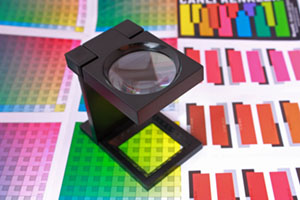You have a PDF file, and you need it in another language. The quote comes back with a line item for desktop publishing. What is it?
Translation and localization projects are more than just changing the text for the target audience: they also include adapting the layout. Adjusting the source document to create the same look and feel in another language requires desktop publishing. Desktop publishing or DTP is the use of layout software combining text and images. Desktop publishing documents may be used for desktop or commercial printing or electronic distribution including PDF, slide shows, email newsletters, epub, and the Web.
Is It Important?
If your provider offers desktop publishing it means that they have the ability to work with the source file format to return the same output. Desktop publishing is an important step in creating a localized version of the document. It takes time to properly format the translated text in layout, especially if space considerations were not anticipated.
Translation can cause the original text to expand or shrink. For example, English to Spanish has an expansion factor of 25%. 1,000 words in English can correlate to 1,250 words in Arabic. Conversely, there is also a shrinkage or contraction to consider. 1,000 words in English can contract to 900 words in Danish. English to Finnish can contract as much as 30%.
To get the same look, you need someone experienced with multilingual desktop publishing who can modify the source file to create a print-ready target file. The PDF you have was generated from a layout software program. There are many different programs that may be used to generate a PDF such as Word, FrameMaker, Illustrator, QuarkXpress, InDesign and many more.
The original software uses what is called the source file format, which is often not widely shared in an organization. A PDF file is sufficient for distribution and printing purposes and is manageable in size. The source file (it may also be called the native or original file) is used if document modifications or updated revisions are necessary. The source file can be very large in size due to graphics and may have supporting files such as fonts. Usually the source file can be found with the graphic artists or publications department in an organization.
Even if you only have a .pdf file, an experienced graphic artist can recreate the layout. Images and fonts may be needed for higher resolution outputs, but a quality PDF can be replicated without the source file. This does require extra time, so it is always best to locate the source file if possible not only for quality sake but time and cost as well.
If you are making an investment for a professionally translated file it is best to also ensure that the layout is handled by someone experienced. A translation service provider will have a native speaker ensure all text reads properly in the final format. You may save money with a text-only return but may end up with an out-of-sync document if you have a non-native speaker placing the text in layout. If you want your translated version to be professional, then formatting and text should be picture perfect.
What Does Desktop Publishing Include?
How Can I Keep Costs Down?
- • Ensure the original document has a simple design; try not to embed images or too many photos in different sizes especially if there is related text.
- • Make sure you have enough space for the expansion of the text, otherwise the line spacing or font size may have to be reduced and the look may not be as close to your original text as you would like.
- • For ease and consistency, it is best to use style sheets.
- • Make sure your font supports the characters in your target language; otherwise it may have to be changed.
- • Supply all the original files, including supporting images and fonts. Remember when using columns to make them wide enough to accommodate the target language, otherwise it will appear messy.
Is There Anything Else I Should Consider?
- • Consider how abbreviations or acronyms should be addressed in the target file. Provide information regarding these terms.
- • Advise if you want imperial and metric measurements to be used together or metric only.
- • Check to ensure the contact information (address, phone number, etc.) is appropriate for the target audience or if it should be changed.
Most important is to use a service provider with experience in both translation and multilingual desktop publishing. When using translation tools such as translation memory, the translator will need to export text and properly import it back into the layout. A seasoned provider will be able to do this seamlessly.
When you receive your translation proposal with the desktop publishing line item, hopefully it will now make sense why multilingual desktop publishing is worth its weight in gold.
Terralíngua is a translation service provider that has worked with some of the world’s top brands. Providing translation, localization, and multilingual desktop publishing services, we only use native speakers who have a deep understanding of the country’s culture and are experts in their field. If you need assistance sharing your message on a global platform, please visit our website.


